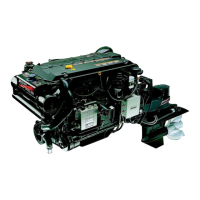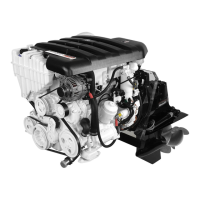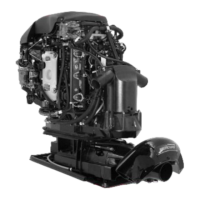30
CD329
Diagnosing EDI Problems (If So Equipped)
Your Authorized MerCruiser Dealer has the proper service tools for diagnosing problems on Electronic Diesel
Injection (EDI) Systems. The Electronic Control Module (ECM) on these engines have the ability to detect some
problems with the system when they occur, and store a “Trouble Code” in the ECM’s memory. This code can
then be read later by a service technician using a special diagnostic tool.
CE335
Multiple EDI Engine Battery Precautions
SITUATION
Alternators: Alternators are designed to charge the battery that supplies electrical power to the engine that the
alternator is mounted on. When batteries for two different engines are connected, one alternator will supply all
of the charging current for both batteries. Normally, the other engine’s alternator will not be required to supply
any charging current.
EDI Electronic Control Module (ECM): The ECM requires a stable voltage source. During multiple engine op-
eration, an onboard electrical device may cause a sudden drain of voltage at the engine’s battery. The voltage
may go below the ECM’s minimum required voltage. Also, the alternator on the other engine may now start
charging. This could cause a voltage spike in the engine’s electrical system.
In either case, the ECM could shut off. When the voltage returns to the range that the ECM requires, the ECM
will reset itself. The engine will now run normally. This ECM shut down usually happens so fast that the engine
just appears to have an ignition miss.
Recommendations
Batteries: Boats with multi-engine EDI power packages require each engine be connected to its own battery.
This ensures that the engine’s Electronic Control Module (ECM) has a stable voltage source.
Battery Switches: Battery switches should always be positioned so each engine is running off its own battery.
DO NOT operate engines with switches in BOTH or ALL position. In an emergency, another engine’s battery can
be used to start an engine with a dead battery.
Battery Isolators: Isolators can be used to charge an auxiliary battery used for powering accessories in the
boat. Isolators should not be used to charge the battery of another engine in the boat unless the type of isolator
is specifically designed for this purpose.
Generators: The generator’s battery should be considered in the same manner as another engine’s battery.

